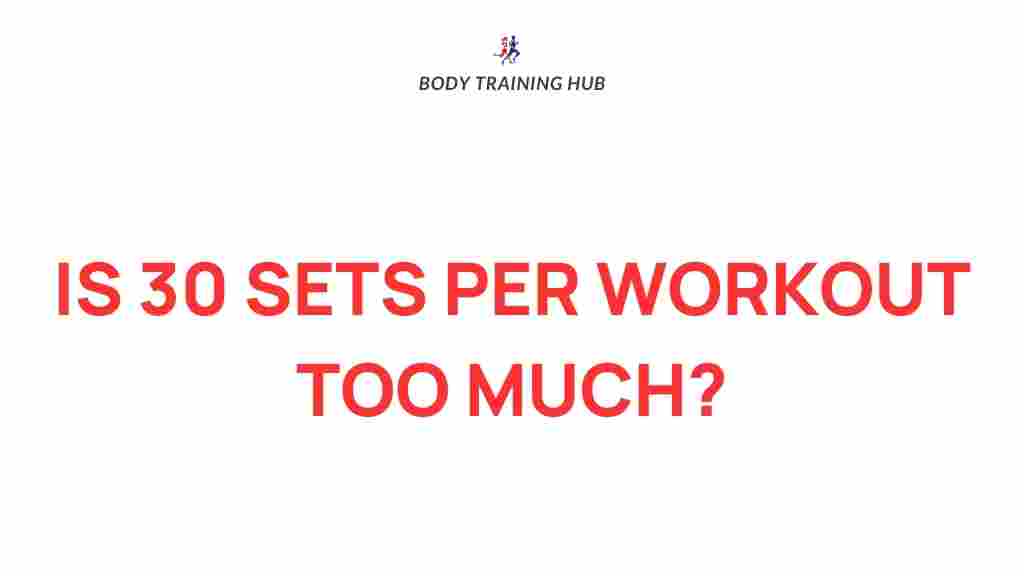Unveiling the Truth: The Ideal Number of Sets per Workout
When it comes to building muscle and improving fitness, many people often wonder about the ideal number of workout sets to include in their fitness regimen. The relationship between the number of sets, exercise intensity, and muscle growth can be complex, yet understanding it is crucial for achieving optimal training efficiency. In this article, we will delve deep into how many sets you should perform per workout, offering insights that will help you maximize your results.
Understanding the Basics of Workout Sets
Before we dive into the specifics, it’s essential to understand what a workout set is. A set refers to a group of consecutive repetitions (reps) of a particular exercise. For instance, if you perform 10 push-ups in a row, you have completed one set of 10 reps. The number of sets you perform can significantly impact your training outcomes.
The Role of Sets in Muscle Growth
To effectively stimulate muscle growth, you need to consider several factors, including:
- Volume: The total amount of work done, typically calculated as sets x reps x weight.
- Intensity: The amount of weight lifted relative to your maximum capability.
- Frequency: How often you train a particular muscle group.
Research indicates that there is a sweet spot for workout sets that can lead to optimal muscle hypertrophy (growth). While the ideal number can vary from person to person, a general guideline is to aim for the following:
Recommended Number of Sets
For most individuals looking to gain muscle, the ideal number of sets per exercise typically falls within the range of 3 to 5 sets. Here’s a breakdown:
- Beginner Lifters: 2 to 3 sets per exercise to build a foundation.
- Intermediate Lifters: 3 to 4 sets per exercise for increased muscle engagement.
- Advanced Lifters: 4 to 6 sets per exercise for maximizing growth potential.
However, it’s important to note that more sets do not always equate to better results. The key is to balance the number of sets with exercise intensity and recovery.
Balancing Sets, Reps, and Intensity
When adjusting your fitness regimen, consider how sets, reps, and intensity work together:
- Lower Reps (1-5): Focus on strength training with heavier weights and fewer sets.
- Moderate Reps (6-12): Ideal for hypertrophy; a mix of moderate weight and moderate sets.
- Higher Reps (12+): Typically used for endurance training; lighter weights with more sets.
Experimenting with different combinations of sets and reps can lead to enhanced training efficiency and muscle adaptations.
Step-by-Step Process to Determine Your Ideal Sets
Finding the right number of workout sets for your specific goals can be a trial-and-error process. Here’s a step-by-step guide to help you:
- Define Your Goals: Are you looking to build strength, size, or endurance? Your goals will dictate your set and rep scheme.
- Assess Your Fitness Level: Beginners may benefit from fewer sets to avoid burnout, while advanced lifters might require more volume.
- Choose Exercises Wisely: Compound movements (e.g., squats, deadlifts) may require more sets than isolation exercises (e.g., bicep curls).
- Monitor Your Progress: Keep track of your performance and adjust your sets based on how your body responds.
- Prioritize Recovery: Ensure you give your muscles adequate time to recover between workouts, especially if you’re doing more sets.
Common Mistakes to Avoid
As you adjust your fitness regimen, be aware of common pitfalls:
- Neglecting Recovery: Overtraining can hinder progress; ensure you allow muscle recovery time.
- Inconsistent Workouts: Regularity is key; stick to a consistent training schedule.
- Ignoring Nutrition: A well-balanced diet supports muscle recovery and growth; ensure you’re fueling your body correctly.
Troubleshooting Your Workout Sets
If you find that your current number of workout sets isn’t yielding the desired results, consider the following troubleshooting tips:
- Evaluate Your Form: Poor technique can lead to ineffective workouts; consider working with a personal trainer for guidance.
- Adjust Your Intensity: If you’re not seeing growth, it may be time to increase the weights you’re lifting.
- Incorporate Variety: Change your exercises or rep schemes regularly to prevent plateaus and keep your workouts engaging.
Conclusion: Finding Your Balance
Ultimately, the ideal number of workout sets per workout varies based on individual goals, fitness levels, and preferences. By understanding the interplay between sets, exercise intensity, and muscle growth, you can tailor your training to achieve optimal training efficiency. Remember to experiment with different combinations, listen to your body, and ensure proper recovery. For more insights on fitness and muscle building, check out this comprehensive guide. Embrace the journey, and let your results speak for themselves!
For additional resources on adjusting your fitness regimen, visit this link for expert advice.
This article is in the category Training Guides and created by BodyTraining Team
